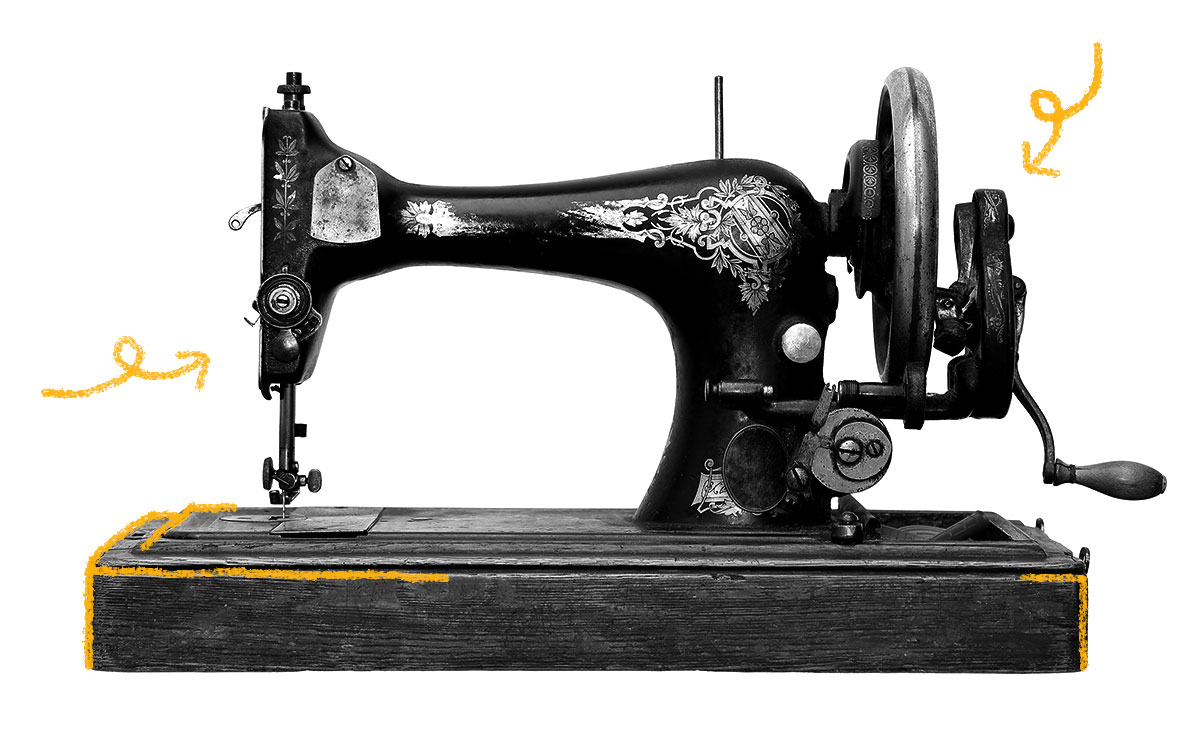The invention of the sewing machine involved an incredible number of designs, patents, and patent lawsuits.The first design dates back to the late 18th century, when Thomas Saint created plans for a machine that could stitch leather. In the first half of the 19th century, sewing machine patents and infringement cases exploded in number. In 1814, Viennese tailor Josef Madersperger earned a patent for his sewing machine design, but he never made his machine commercially available. In 1830, French tailor Barthélemy Thimonnier created the first mechanical sewing machine and put it into production, but his machines were destroyed by a mob of angry tailors (really!). He tried again with a new design, and the same thing happened! In 1830s America, Walter Hunt set out to build a sewing machine but abandoned his design because he was worried about putting seamstresses and tailors out of work. In 1846, Elias Howe patented a hand-cranked sewing machine that was very similar to Hunt’s. After his wife’s death, Howe learned his design had been copied many times and pursued restitution for the patent infringements. Afterward the court cases, a machinist named Isaac Singer who had invented his own sewing machine approached Howe for the rights to his eye-pointed needle design. Then Singer gathered seven other manufacturers for their patents, creating the country’s first patent pool, and they all agreed to pay Howe a fee for each machine made. Howe made a fortune in patent rights and royalties while Singer earned public recognition and a longstanding association between his name and the sewing machine, in part due to being the first man to spend more than $1 million dollars a year on advertising.

Your go-to guide for weird history facts
Subscribe to the FREE daily email that makes learning about history fun.


